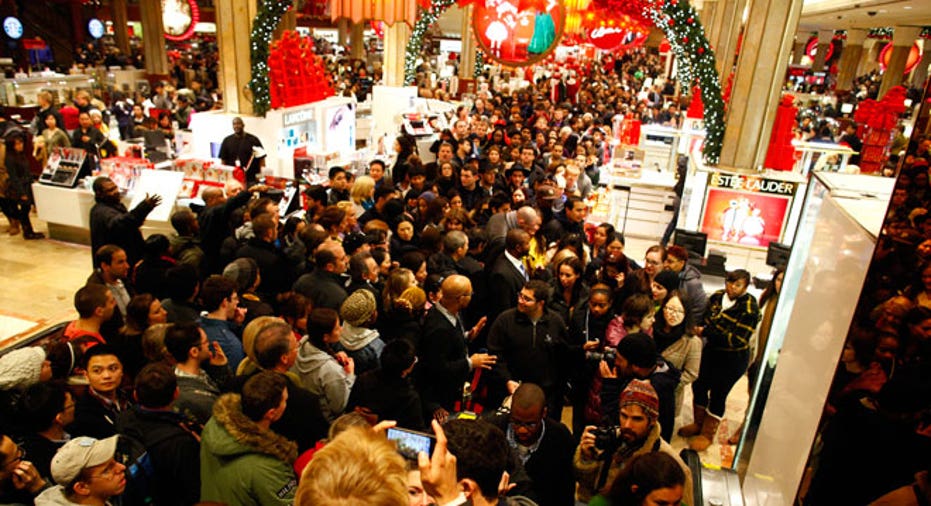How to Get a Jump on 'Black Friday'

If you want to reduce stress and stretch your tight budget dollars this holiday shopping season, skip Black Friday and start hunting for bargains when black cats are still in vogue.
As we've previously reported, the annual doorbuster ritual that has traditionally taken place on the Friday after Thanksgiving to mark the start of the Christmas shopping season has already lost a lot of its luster in recent years, thanks to overhyped bargains and sometimes surly crowds.
The significance of Black Friday as the Super Bowl of shopping has also diminished, as more retailers have jumped the gun. A few years ago, retailers started releasing their early Black Friday deals during Thanksgiving week, says Phong Vu, CEO of DealScience.com, which tracks the discounts and deals on 13,500 brands offered by 360 retailers, including Amazon, Best Buy, and Dick's Sporting Goods. The time frame seems to keep moving up. Phong says that two years ago, retailers started releasing early Black Friday deals at the end of the first week of November, and last year, Amazon and Walmart started releasing them on the first day of November.
"This year, we’ll likely see Black Friday sales starting before Halloween," Phong said.
The trend is all about retailers fighting for a bigger piece of your pocketbook in today's relatively stagnant economy. The American dream of 80 percent of consumers is homeownership and paying down debt, according to a biannual national survey of 1,700 shoppers by WSL Strategic Retail, a New York-based consulting firm.
That mirrors the findings of our own recent study of 1,006 Americans' buying habits by the Consumer Reports National Research Center. We found that, while consumers are opening up their wallets more, the recession and slow-motion seven-year recovery has had a major impact on our buying habits. Shoppers are more frugal, pragmatic, and interested in saving on everything. Tax refunds and imaginary lottery windfalls are now earmarked to pay down debt.
"What retailers know is that most shoppers have a certain amount to spend for the holidays, and whoever gets that money first wins, because when the money runs out, the consumers stop shopping," Candace Corlette, president of WSL, said.
Corlette says that retailers want to get their dollars before Black Friday, and that's why their sales are now starting right after Halloween. "By next year, we won't be talking about Black Friday as an event anymore," Corlette said.
Interested in saving, but having trouble budgeting? Start with our Guide to budgeting and saving.
To get the biggest gift-giving bang for your holiday budget bucks, plan a smart shopping strategy using these key techniques.
1) Start early. Retailers who want your dollars in late October and early November are likely to entice with discounts that are better than the average for the rest of the year, even if they're not as good as some actual Black Friday deals. But don't forget that those Black Friday come-ons typically come in limited quantities and require shoppers to jump through hoops by showing up at certain predawn hours and running an obstacle course of maddening crowds.
2) Check your list now. Consumer Reports product research experts, who monitor prices, have found that some items go on deep discount according to the calendar. So if there's a bicycle, computer, digital camera, or winter coat on Santa's list, October is the perfect time to buy for big savings. November, on the other hand, is the month for baby products, camcorders, toys, and TVs, so time your purchases accordingly.
3) Pre-shop. Before setting foot in any store, price-shop online, then buy the items you want at the store with the lowest price. Check Amazon.com but also the websites of the physical stores you patronize around town. Online prices used to be different from in-store prices, but they're now the same. "Best Buy tried charging 10 to 20 percent lower prices online, to encourage people to shop online, but customers got mad and Best Buy got rid of that practice pretty fast," Corlette said.
4) Tap the technology. Sign up for retailers' e-mail newsletters, coupons, and special sale alerts. Use two price-comparison websites that did well in a ShopSmart evaluation earlier this year, Google.com/shopping and PriceGrabber.com. Get coupons and coupon codes on RetailMeNot.com and DealScience.com. And make sure you download the Amazon.com and Overstock.com apps to your smart phone so you can check their prices while you're in the store. PriceBlink.com is an applet that runs in the background on your phone and alerts you to better prices elsewhere.
5) Get your game on. Approach holiday shopping with missionary zeal. That means keep your receipts, and if you see what you have already bought for a lower price, get evidence of the competing lower price, demand that the original seller match that price and refund the difference, or return the item and buy it cheaper at the other store. Give up your allegiences and be ready to compromise by buying a cheaper brand or shopping at a lower-priced merchant. And, of course, sharpen your haggling skills and always be ready to bargain for a better deal.
—Jeff Blyskal (@JeffBlyskal on Twitter)
Copyright © 2005-2014 Consumers Union of U.S., Inc. No reproduction, in whole or in part, without written permission. Consumer Reports has no relationship with any advertisers on this site.



















